Machine Learning Data Scientiest Cover Letter Examples

May 29, 2025
|
12 min read
Master the art of writing a data scientist cover letter. Transform your skills into a real page-turner and make your job application out of this world, one data point at a time. Debug your professional future today!
Rated by 348 people
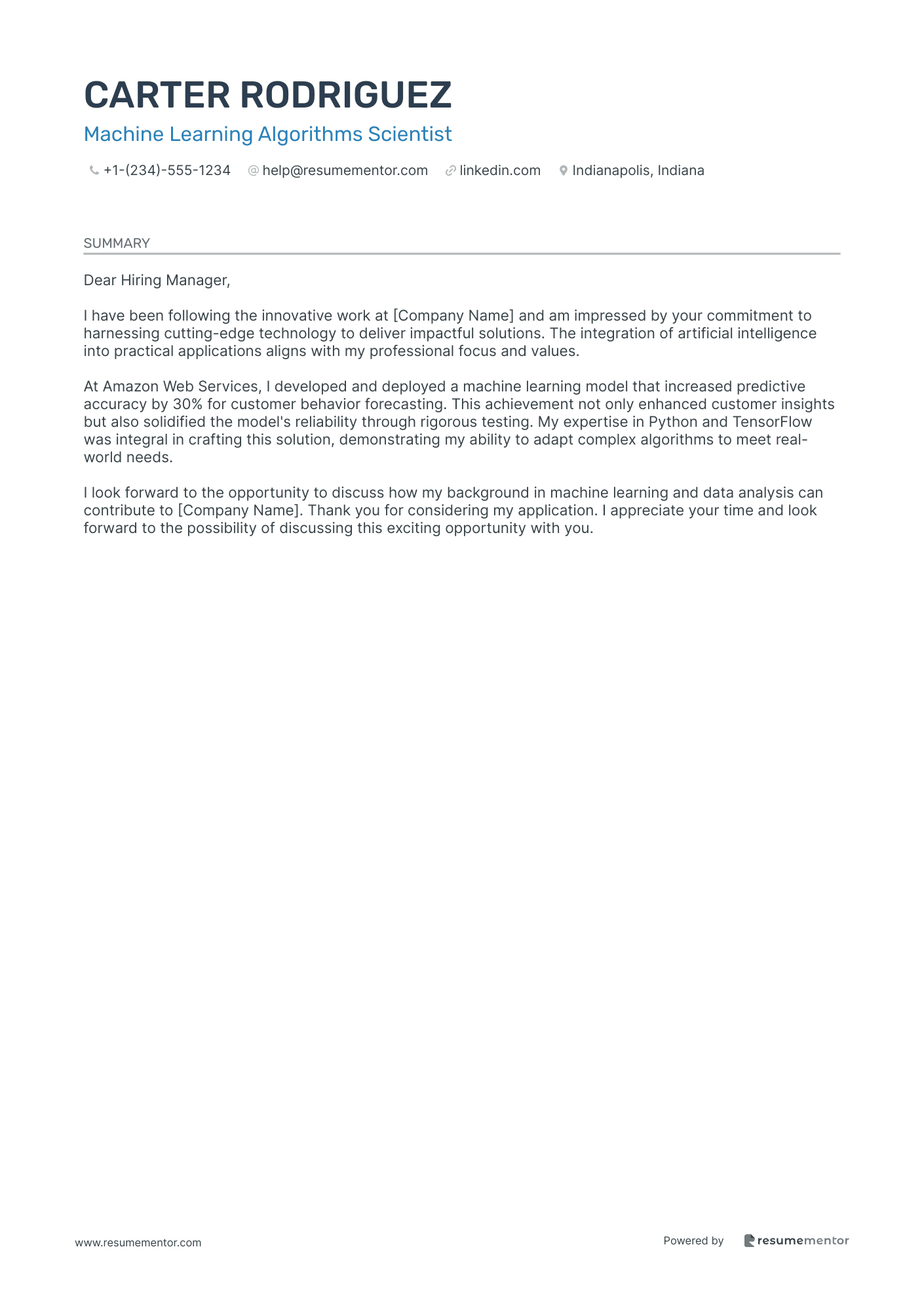
Machine Learning Algorithms Scientist
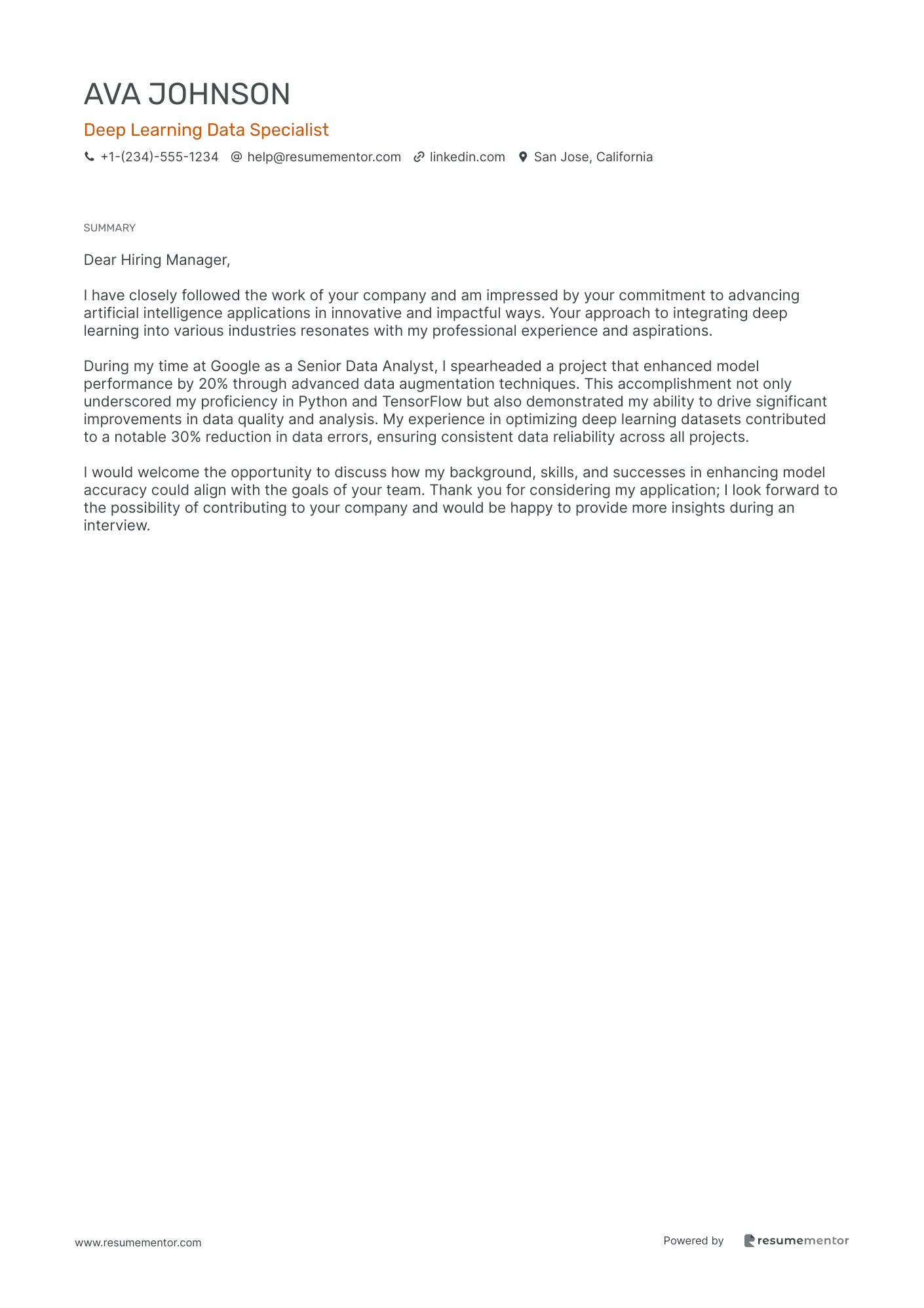
Deep Learning Data Specialist
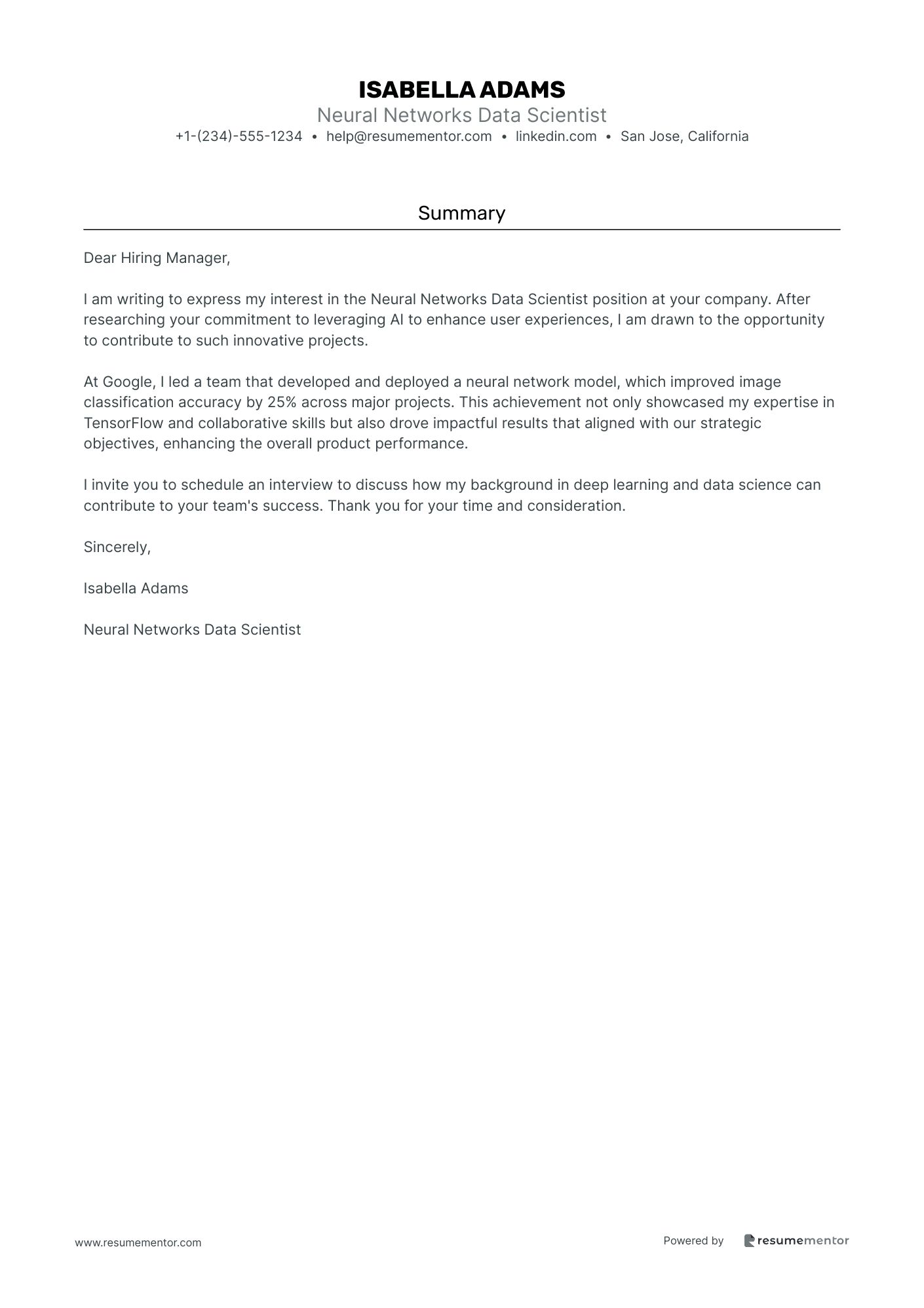
Neural Networks Data Scientist

Predictive Analytics Data Scientist
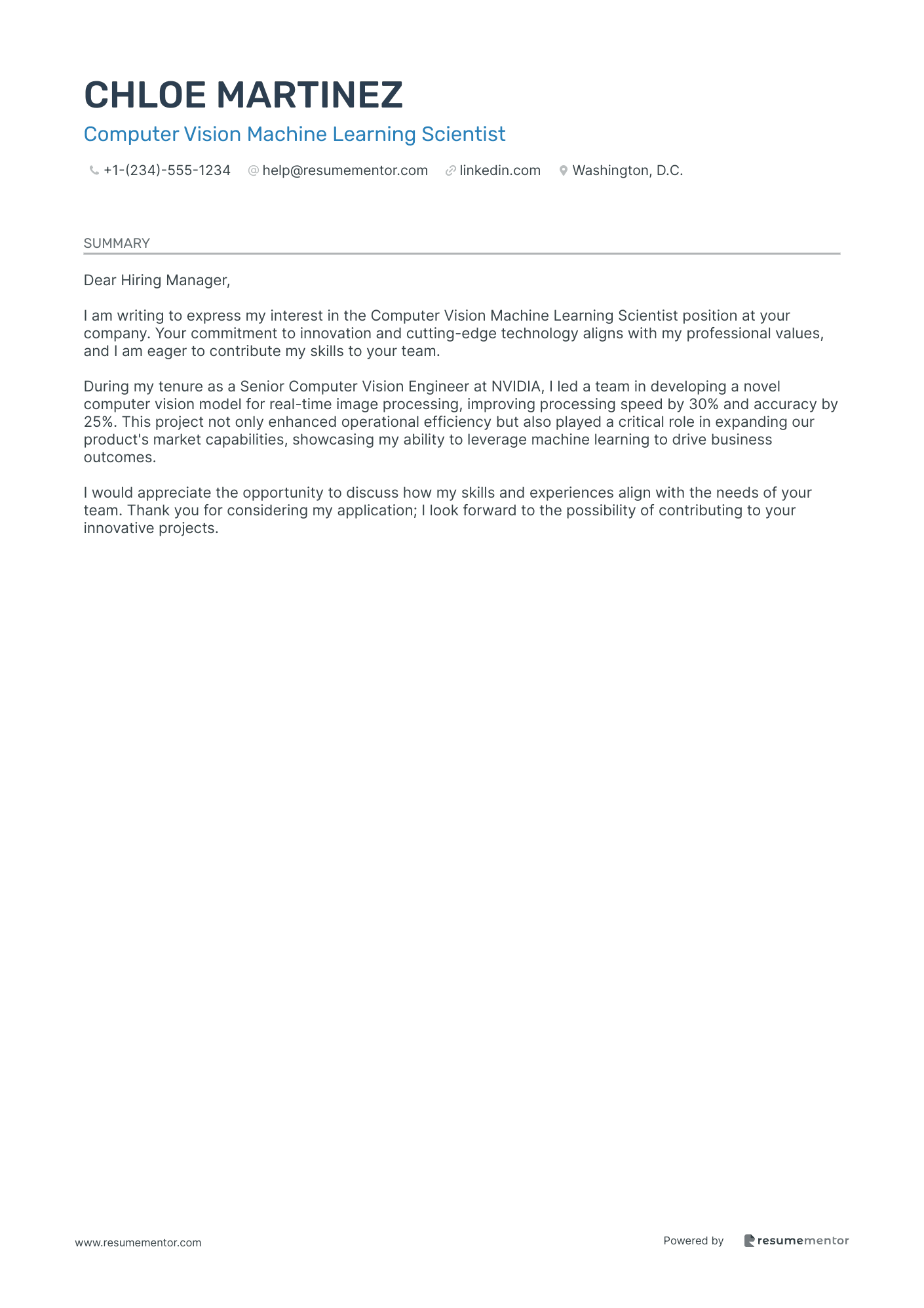
Computer Vision Machine Learning Scientist

Natural Language Processing Data Scientist
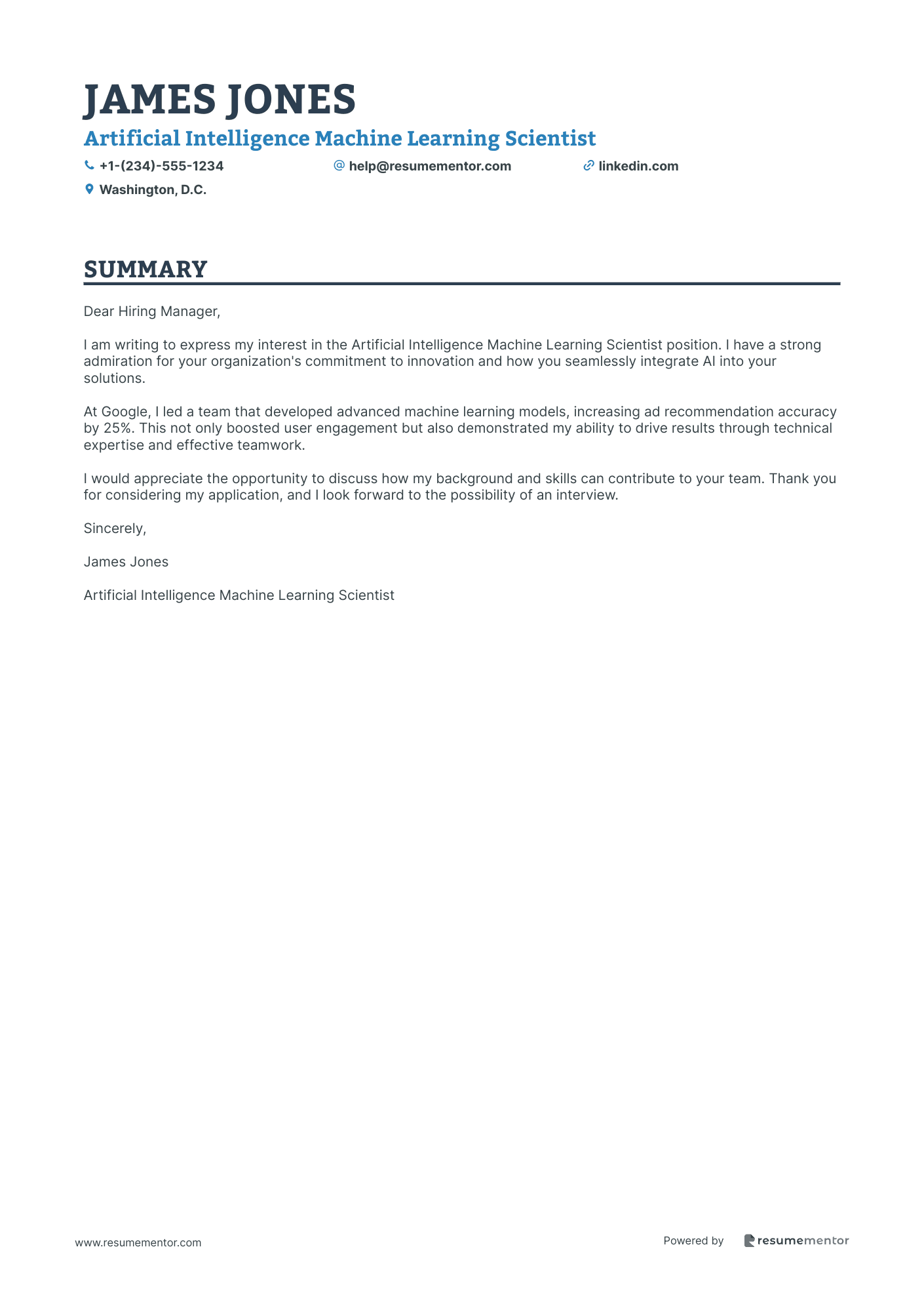
Artificial Intelligence Machine Learning Scientist
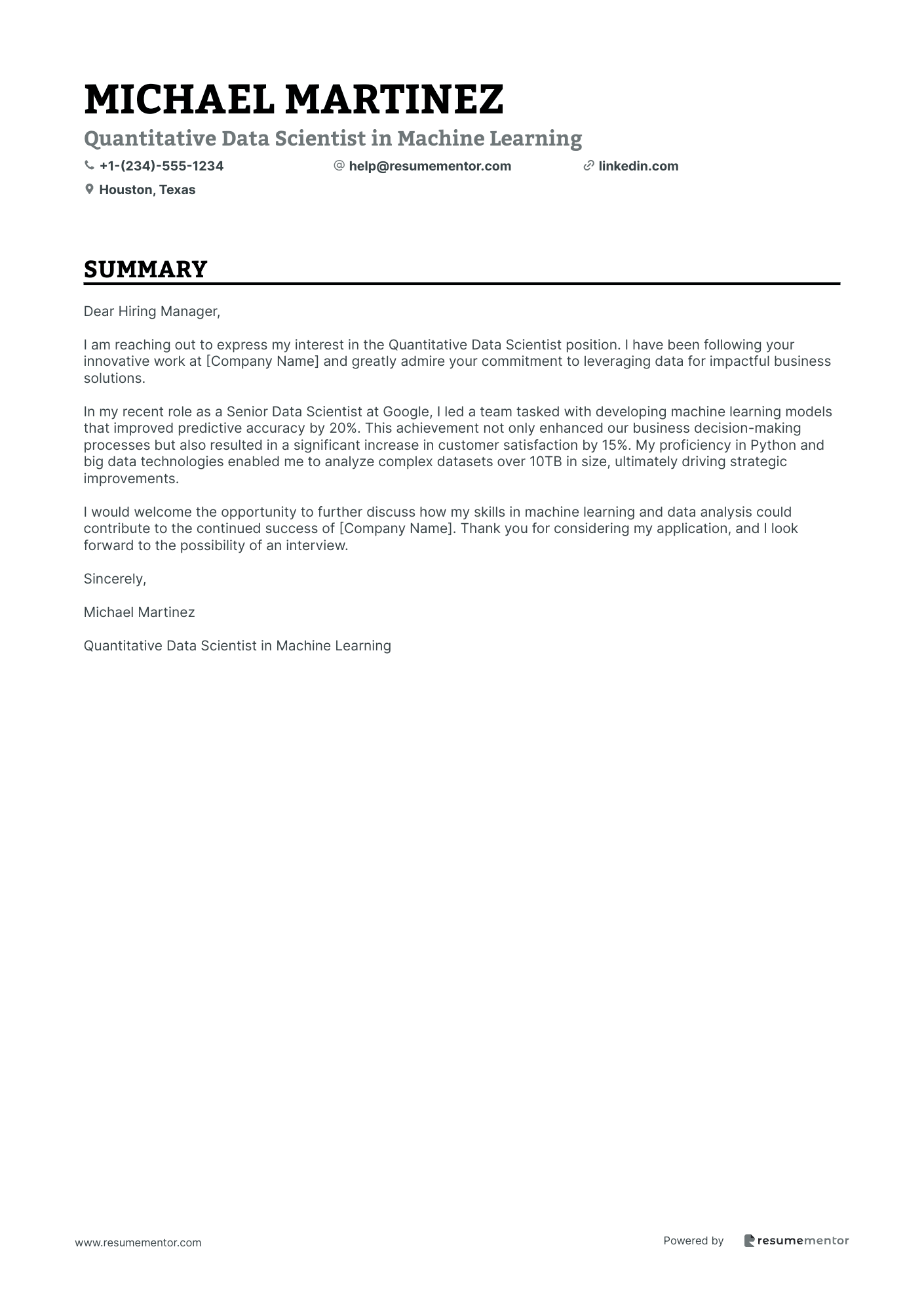
Quantitative Data Scientist in Machine Learning
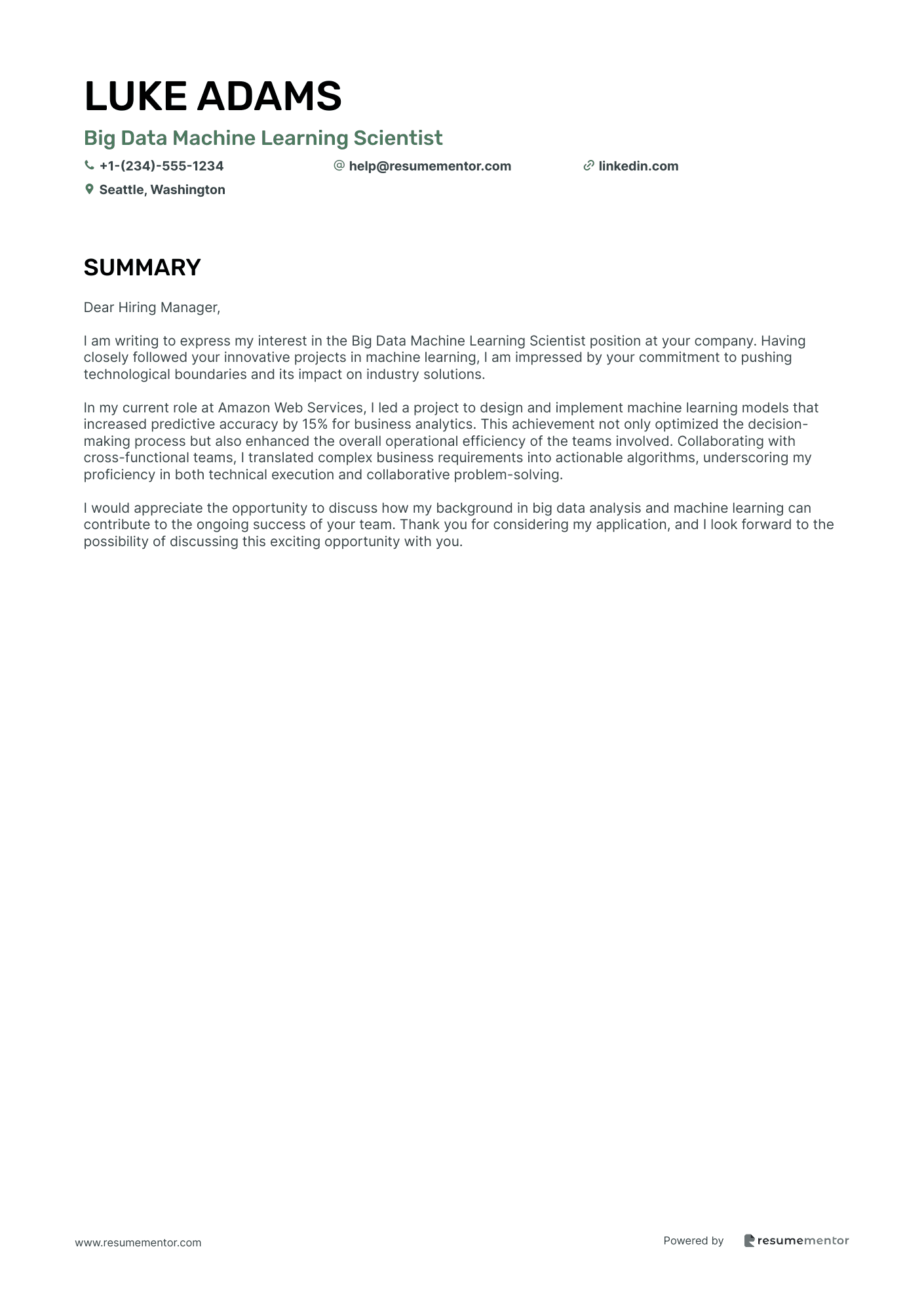
Big Data Machine Learning Scientist
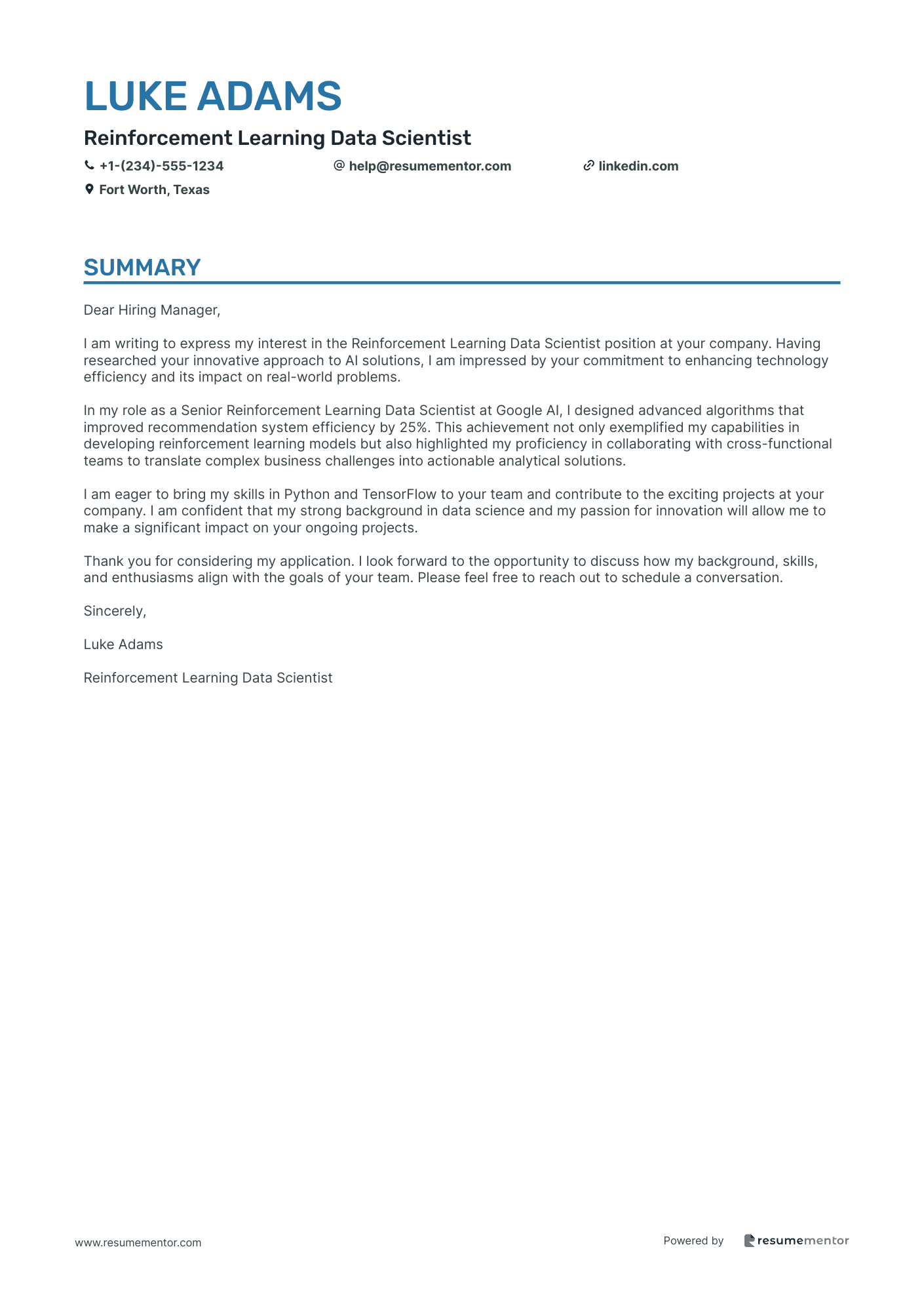
Reinforcement Learning Data Scientist

Machine Learning Algorithms Scientist cover letter sample
Deep Learning Data Specialist cover letter sample
Neural Networks Data Scientist cover letter sample
Predictive Analytics Data Scientist cover letter sample
Computer Vision Machine Learning Scientist cover letter sample
Natural Language Processing Data Scientist cover letter sample
Artificial Intelligence Machine Learning Scientist cover letter sample
Quantitative Data Scientist in Machine Learning cover letter sample
Big Data Machine Learning Scientist cover letter sample
Reinforcement Learning Data Scientist cover letter sample
Related Articles
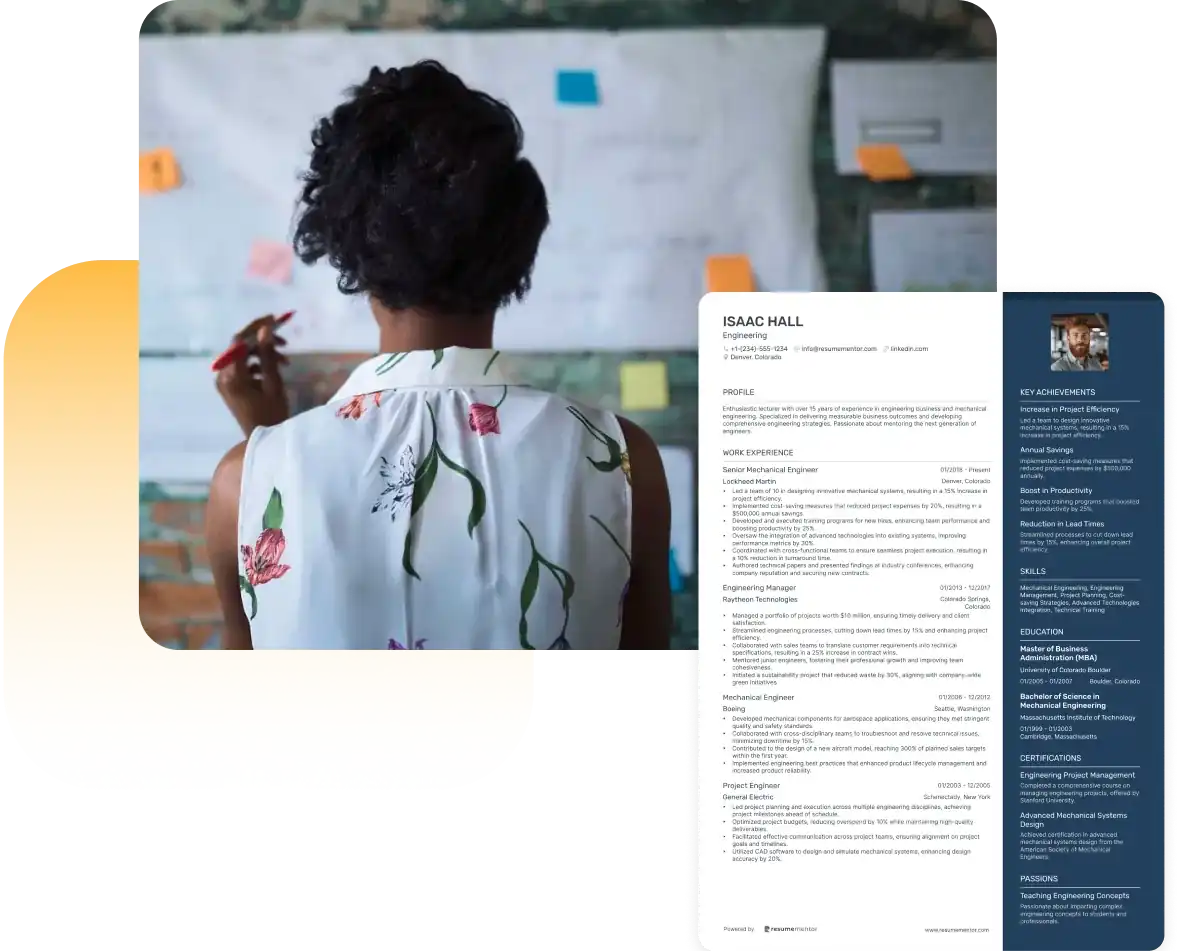
Continue Reading
Check more recommended readings to get the job of your dreams.
Resume
Resources
Tools
© 2025. All rights reserved.
Made with love by people who care.
